Laravel 9 Paypal Payment Gateway Integration
Websolutionstuff | Jan-17-2023 | Categories : Laravel PHP
In this article, we will see laravel 9 paypal payment gateway integration. Here, we will learn how to integrate the paypal payment gateway integration in laravel 9. Most of the merchants accept online payments option for payment gateway integration. A payment gateway is a tool that allows merchants to accept online payments like Stripe, PayPal, Payoneer, and Razorpay.
PayPal is the faster, safer way to send and receive money or make an online payment. Also, it can manage digital wallets, money management, and more. We will use paypal/rest-api-sdk-php package. This SDK is deprecated. You can continue to use it, but no new features or support requests will be accepted.
For alternatives, please visit the current SDK homepage on the PayPal Developer Portal.
So, let's see paypal payment gateway integration in laravel 9, paypal integration in laravel 9, paypal/rest-api-sdk-php laravel 9, and laravel 9 paypal integration.
How to integrate PayPal payment gateway integration in laravel 9
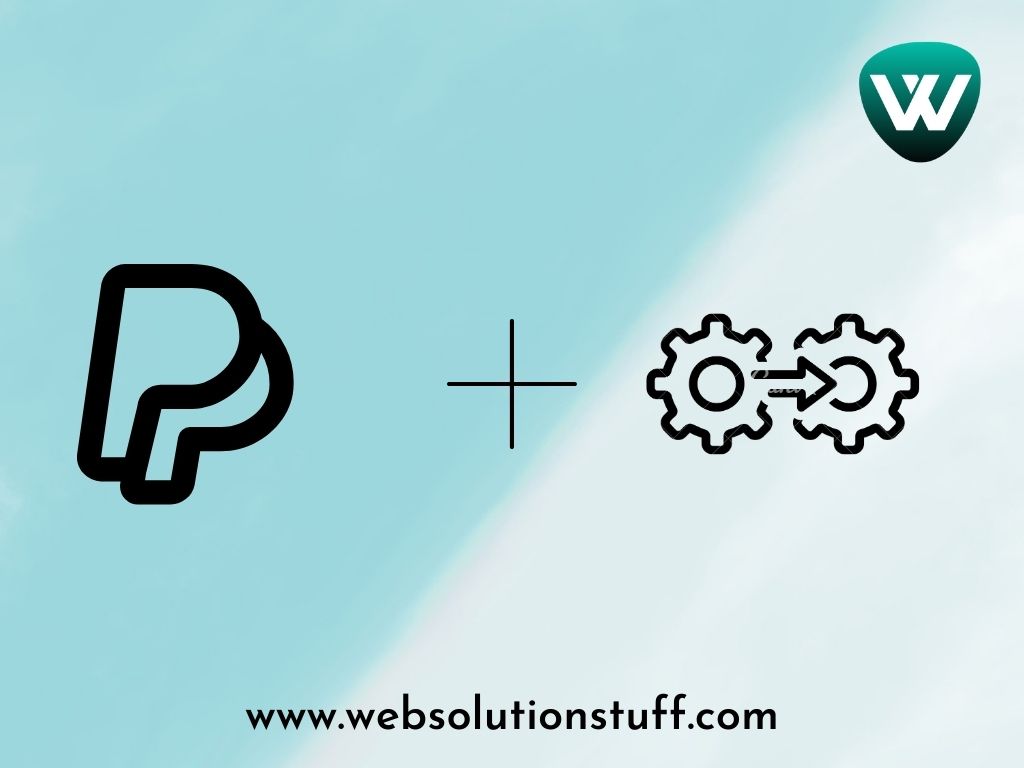
Step 1: Install Laravel 9 Application
Step 2: Setup Database Configuration
Step 3: Install paypal/rest-api-sdk-php Package
Step 4: Configuration paypal.php File
Step 5: Add Route in web.php File
Step 6: Create Controller
Step 7: Create Blade File
In this step, we will install the laravel 9 application using the composer command.
composer create-project --prefer-dist laravel/laravel laravel_9_paypal_integration
Now, we will set up database configuration like database name, username, password, etc. So, let's open the .env file and fill in the details like as below.
DB_CONNECTION=mysql
DB_HOST=127.0.0.1
DB_PORT=3306
DB_DATABASE=your_database_name
DB_USERNAME=your_database_username
DB_PASSWORD=your_database_password
In this step, we will install paypal/rest-api-sdk-php package using the composer command. composer is the recommended way to install the SDK. Alternatively, if you prefer not to use Composer, but want to install Paypal SDK, you can do it by direct download.
composer require paypal/rest-api-sdk-php
After installation of the PayPal package, we required a client id and secret key for Paypal integration. So, we need to login into PayPal developer mode and create a new sandbox account for the same.
After login into Paypal, you need to get the client id and secret key like the below screenshot.
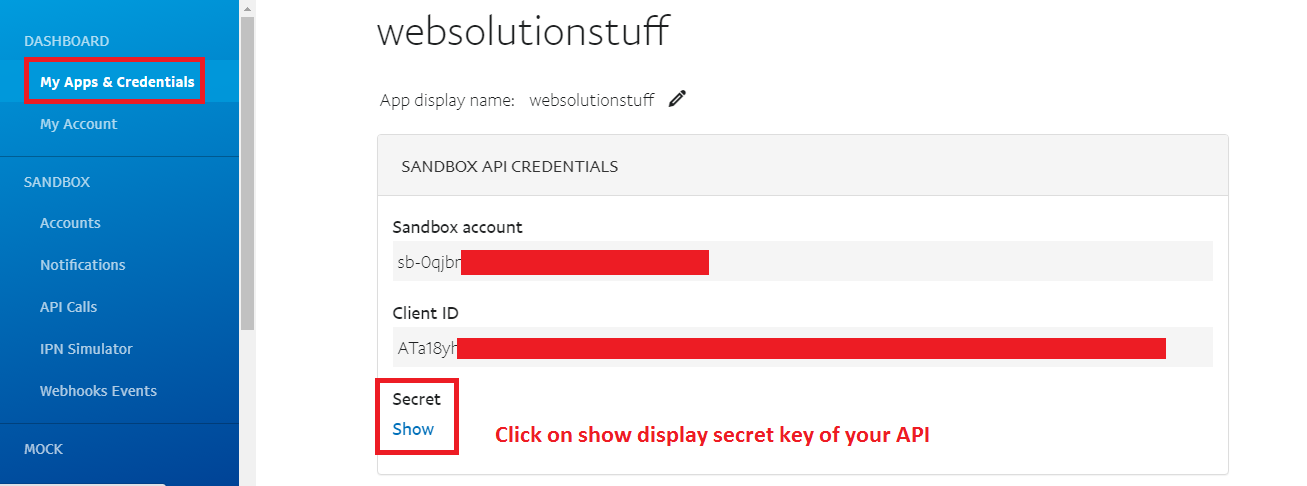
Now, we need to configure the paypal.php file. So, we have manually created one file in config/paypal.php and added the below code.
<?php
return [
'client_id' => 'Enter Your Client ID',
'secret' => 'Enter Your Secret Key',
'settings' => array(
'mode' => 'sandbox',
'http.ConnectionTimeOut' => 1000,
'log.LogEnabled' => true,
'log.FileName' => storage_path() . '/logs/paypal.log',
'log.LogLevel' => 'FINE'
),
];
In this step, we will add routes on the web.php file
routes/web.php
<?php
use Illuminate\Support\Facades\Route;
use App\Http\Controllers\PaypalController;
Route::get('paywithpaypal', array('as' => 'paywithpaypal','uses' => 'PaypalController@payWithPaypal'));
Route::post('paypal', array('as' => 'paypal','uses' => 'PaypalController@postPaymentWithpaypal'));
Route::get('paypal', array('as' => 'status','uses' => 'PaypalController@getPaymentStatus'));
Now, we will create the PaypalController.php file and add the following code to that file.
<?php
namespace App\Http\Controllers;
use App\Http\Requests;
use Illuminate\Http\Request;
use Validator;
use URL;
use Session;
use Redirect;
use Input;
use PayPal\Rest\ApiContext;
use PayPal\Auth\OAuthTokenCredential;
use PayPal\Api\Amount;
use PayPal\Api\Details;
use PayPal\Api\Item;
use PayPal\Api\ItemList;
use PayPal\Api\Payer;
use PayPal\Api\Payment;
use PayPal\Api\RedirectUrls;
use PayPal\Api\ExecutePayment;
use PayPal\Api\PaymentExecution;
use PayPal\Api\Transaction;
class PaypalController extends Controller
{
private $_api_context;
public function __construct()
{
$paypal_configuration = \Config::get('paypal');
$this->_api_context = new ApiContext(new OAuthTokenCredential($paypal_configuration['client_id'], $paypal_configuration['secret']));
$this->_api_context->setConfig($paypal_configuration['settings']);
}
public function payWithPaypal()
{
return view('paywithpaypal');
}
public function postPaymentWithpaypal(Request $request)
{
$payer = new Payer();
$payer->setPaymentMethod('paypal');
$item_1 = new Item();
$item_1->setName('Product 1')
->setCurrency('USD')
->setQuantity(1)
->setPrice($request->get('amount'));
$item_list = new ItemList();
$item_list->setItems(array($item_1));
$amount = new Amount();
$amount->setCurrency('USD')
->setTotal($request->get('amount'));
$transaction = new Transaction();
$transaction->setAmount($amount)
->setItemList($item_list)
->setDescription('Enter Your transaction description');
$redirect_urls = new RedirectUrls();
$redirect_urls->setReturnUrl(URL::route('status'))
->setCancelUrl(URL::route('status'));
$payment = new Payment();
$payment->setIntent('Sale')
->setPayer($payer)
->setRedirectUrls($redirect_urls)
->setTransactions(array($transaction));
try {
$payment->create($this->_api_context);
} catch (\PayPal\Exception\PPConnectionException $ex) {
if (\Config::get('app.debug')) {
\Session::put('error','Connection timeout');
return Redirect::route('paywithpaypal');
} else {
\Session::put('error','Some error occur, sorry for inconvenient');
return Redirect::route('paywithpaypal');
}
}
foreach($payment->getLinks() as $link) {
if($link->getRel() == 'approval_url') {
$redirect_url = $link->getHref();
break;
}
}
Session::put('paypal_payment_id', $payment->getId());
if(isset($redirect_url)) {
return Redirect::away($redirect_url);
}
\Session::put('error','Unknown error occurred');
return Redirect::route('paywithpaypal');
}
public function getPaymentStatus(Request $request)
{
$payment_id = Session::get('paypal_payment_id');
Session::forget('paypal_payment_id');
if (empty($request->input('PayerID')) || empty($request->input('token'))) {
\Session::put('error','Payment failed');
return Redirect::route('paywithpaypal');
}
$payment = Payment::get($payment_id, $this->_api_context);
$execution = new PaymentExecution();
$execution->setPayerId($request->input('PayerID'));
$result = $payment->execute($execution, $this->_api_context);
if ($result->getState() == 'approved') {
\Session::put('success','Payment success !!');
return Redirect::route('paywithpaypal');
}
\Session::put('error','Payment failed !!');
return Redirect::route('paywithpaypal');
}
}
Now, we need to create one blade file for view. So, add the below code in your paywithpaypal.php file.
<html>
<head>
<meta charset="utf-8">
<title>Laravel 9 Paypal Payment Gateway Integration - Websolutionstuff</title>
<link href="https://stackpath.bootstrapcdn.com/bootstrap/3.4.1/css/bootstrap.min.css" rel="stylesheet">
<script src="https://code.jquery.com/jquery-3.5.1.min.js"></script>
<script src="https://stackpath.bootstrapcdn.com/bootstrap/3.4.1/js/bootstrap.min.js"></script>
</head>
<body>
<div class="container">
<div class="row">
<div class="col-md-8 col-md-offset-2">
<h3 class="text-center" style="margin-top: 30px;">Laravel 9 Paypal Payment Gateway Integration - Websolutionstuff</h3>
<div class="panel panel-default" style="margin-top: 60px;">
@if ($message = Session::get('success'))
<div class="custom-alerts alert alert-success fade in">
<button type="button" class="close" data-dismiss="alert" aria-hidden="true"></button>
{!! $message !!}
</div>
<?php Session::forget('success');?>
@endif
@if ($message = Session::get('error'))
<div class="custom-alerts alert alert-danger fade in">
<button type="button" class="close" data-dismiss="alert" aria-hidden="true"></button>
{!! $message !!}
</div>
<?php Session::forget('error');?>
@endif
<div class="panel-heading"><b>Paywith Paypal</b></div>
<div class="panel-body">
<form class="form-horizontal" method="POST" id="payment-form" role="form" action="{!! URL::route('paypal') !!}" >
{{ csrf_field() }}
<div class="form-group{{ $errors->has('amount') ? ' has-error' : '' }}">
<label for="amount" class="col-md-4 control-label">Enter Amount</label>
<div class="col-md-6">
<input id="amount" type="text" class="form-control" name="amount" value="{{ old('amount') }}" autofocus>
@if ($errors->has('amount'))
<span class="help-block">
<strong>{{ $errors->first('amount') }}</strong>
</span>
@endif
</div>
</div>
<div class="form-group">
<div class="col-md-6 col-md-offset-4">
<button type="submit" class="btn btn-primary">
Paywith Paypal
</button>
</div>
</div>
</form>
</div>
</div>
</div>
</div>
</div>
</body>
</html>
Output:
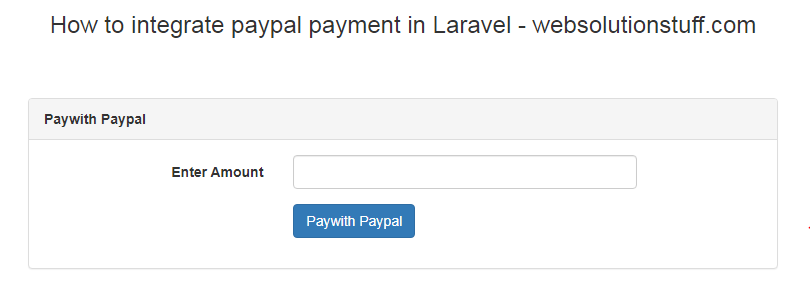
Once you will enter the amount you will get a form like this.
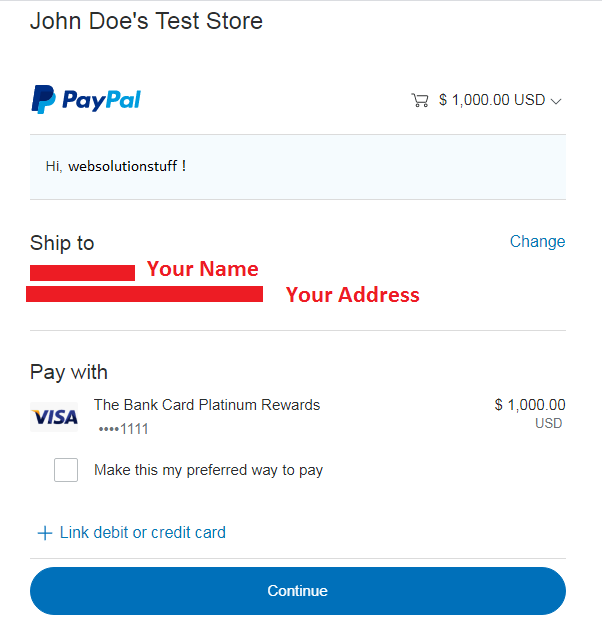
After clicking on continue, you will get a success form like the below screenshot.
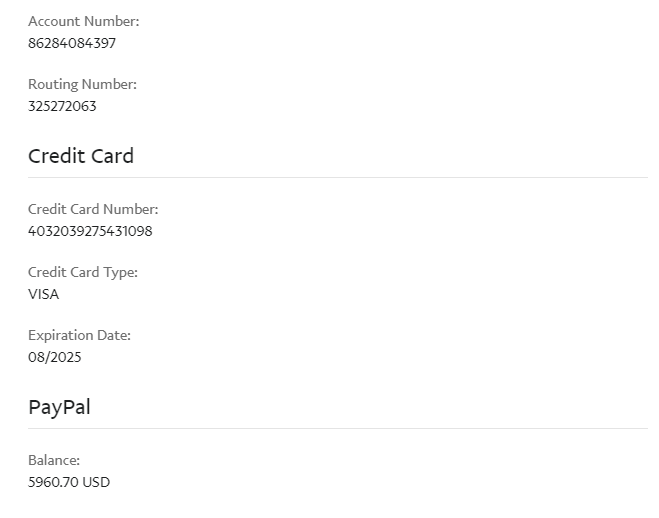
You might also like:
- Read Also: How to Send E-mail Using Queue in Laravel 7/8
- Read Also: Laravel 9 Vue JS CRUD Operation Example
- Read Also: Laravel 8 Toastr Notifications Example
- Read Also: Laravel 9 User Role and Permission
Recommended Post
Featured Post
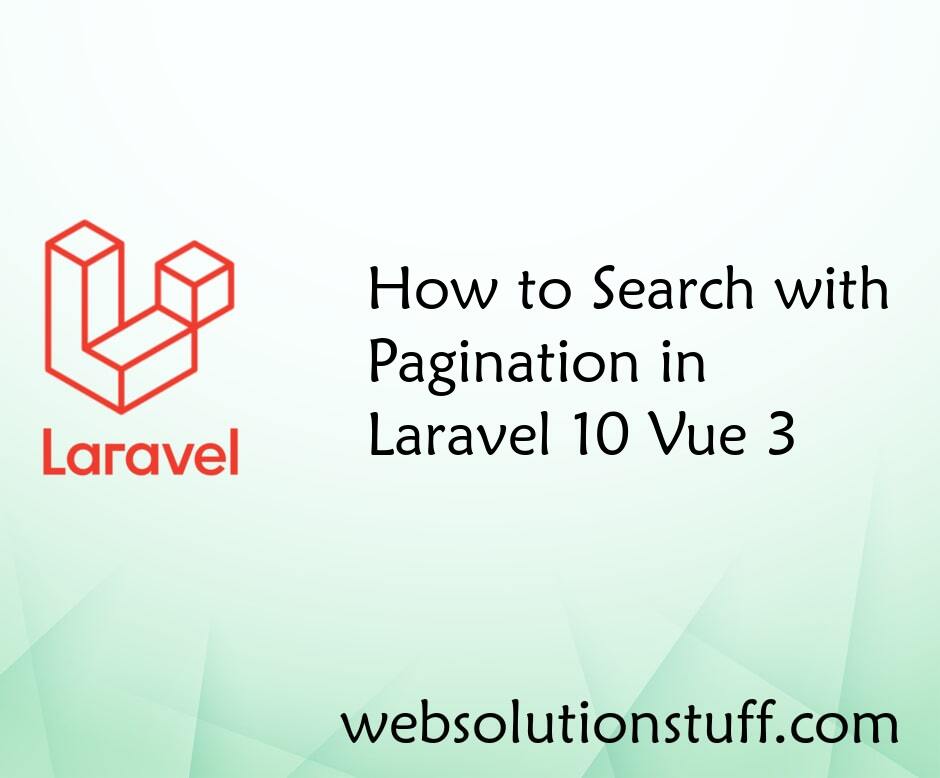
How to Search with Pagination...
Hey everyone! Ever found yourself in need of a straightforward example for integrating search and pagination in a Larave...
Jan-01-2024

How To Validate Password And C...
In this article, we'll explore a simple way to validate passwords and confirm passwords using jQuery. Password valid...
Sep-02-2020
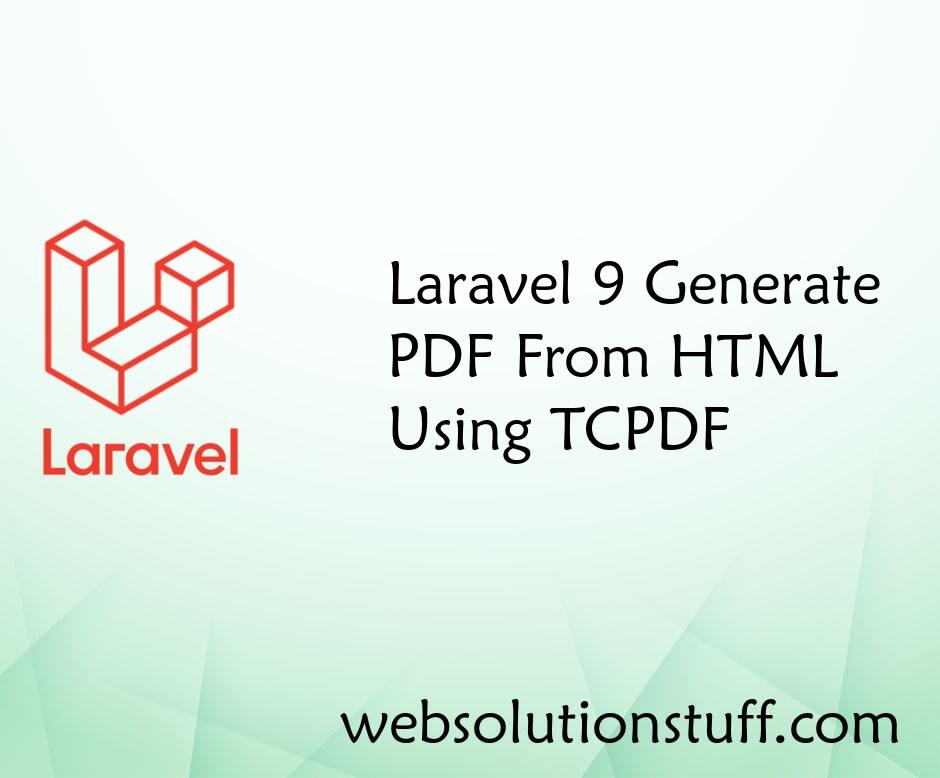
Laravel 9 Generate PDF From HT...
In this article, we will see laravel 9 generate PDF from HTML using TCPDF. Here, we will learn how to integrate tcpdf in...
Jan-31-2023
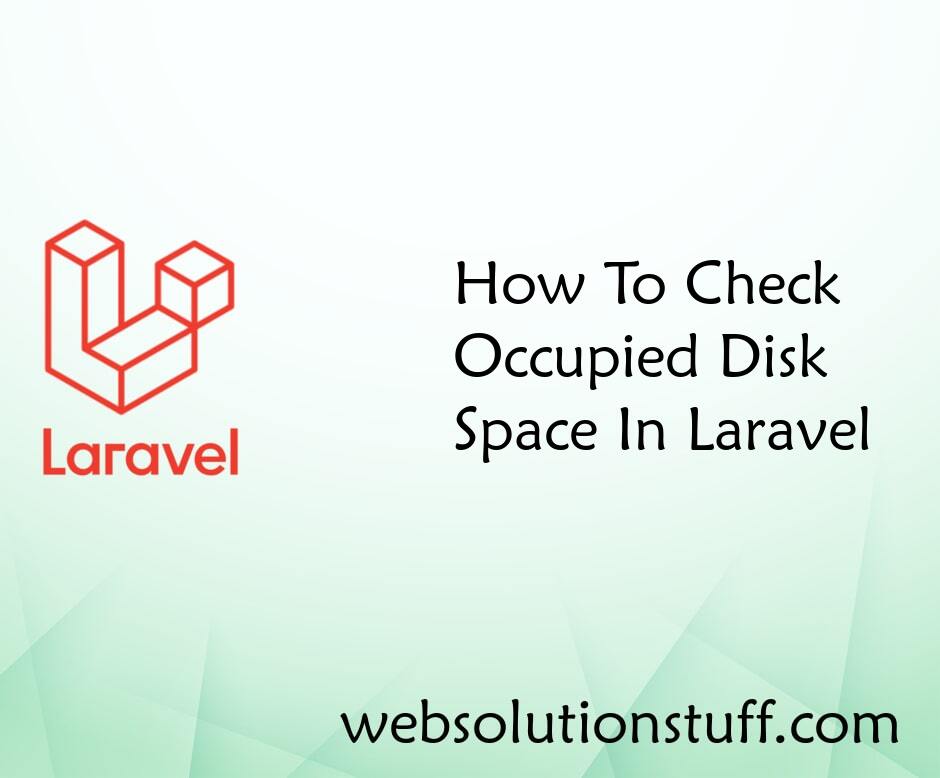
How To Check Occupied Disk Spa...
Many times we need requirements to check the occupied disk space of the server on the admin side and we are checking man...
Jul-29-2020